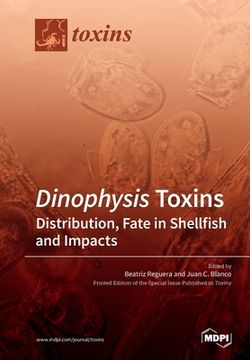Share
Dinophysis Toxins: Distribution, Fate in Shellfish and Impacts
Reguera, Beatriz ; Blanco, Juan (Author)
·
Mdpi AG
· Paperback
Dinophysis Toxins: Distribution, Fate in Shellfish and Impacts - Reguera, Beatriz ; Blanco, Juan
Choose the list to add your product or create one New List
✓ Product added successfully to the Wishlist.
Go to My Wishlists
Origin: U.S.A.
(Import costs included in the price)
It will be shipped from our warehouse between
Friday, July 26 and
Tuesday, August 13.
You will receive it anywhere in United Kingdom between 1 and 3 business days after shipment.
Synopsis "Dinophysis Toxins: Distribution, Fate in Shellfish and Impacts"
Several species of Dinophysis produce one or two groups of lipophilic toxins: okadaic acid (OA) and its derivatives; or the dinophysistoxins (DTXs) (also known as diarrhetic shellfish poisons or DSP toxins) and pectenotoxins (PTXs). DSP toxins are potent inhibitors of protein phosphatases, causing gastrointestinal intoxication in consumers of contaminated seafood. Forty years after the identification of Dinophysis as the causative agent of DSP in Japan, contamination of filter feeding shellfish exposed to Dinophysis blooms is recognized as a problem worldwide. DSP events affect public health and cause considerable losses to the shellfish industry. Costly monitoring programs are implemented in regions with relevant shellfish production to prevent these socioeconomic impacts. Harvest closures are enforced whenever toxin levels exceed regulatory limits (RLs). Dinophysis species are kleptoplastidic dinoflagellates; they feed on ciliates (Mesodinium genus) that have previously acquired plastids from cryptophycean (genera Teleaulax, Plagioselmis, and Geminigera) nanoflagellates. The interactions of Dinophysis with different prey regulate their growth and toxin production. When Dinophysis cells are ingested by shellfish, their toxins are partially biotransformed and bioaccumulated, rendering the shellfish unsuitable for human consumption. DSP toxins may also affect shellfish metabolism. This book covers diverse aspects of the abovementioned topics--from the laboratory culture of Dinophysis and the kinetics of uptake, transformation, and depuration of DSP toxins in shellfish to Dinophysis population dynamics, the monitoring and regulation of DSP toxins, and their impact on the shellfish industry in some of the aquaculture regions that are traditionally most affected, namely, northeastern Japan, western Europe, southern Chile, and New Zealand.

